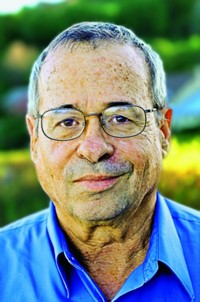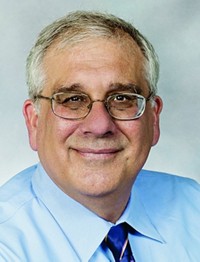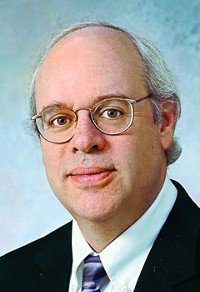Advertisement
Grab your lab coat. Let's get started
Welcome!
Welcome!
Create an account below to get 6 C&EN articles per month, receive newsletters and more - all free.
It seems this is your first time logging in online. Please enter the following information to continue.
As an ACS member you automatically get access to this site. All we need is few more details to create your reading experience.
Not you? Sign in with a different account.
Not you? Sign in with a different account.
ERROR 1
ERROR 1
ERROR 2
ERROR 2
ERROR 2
ERROR 2
ERROR 2
Password and Confirm password must match.
If you have an ACS member number, please enter it here so we can link this account to your membership. (optional)
ERROR 2
ACS values your privacy. By submitting your information, you are gaining access to C&EN and subscribing to our weekly newsletter. We use the information you provide to make your reading experience better, and we will never sell your data to third party members.
People
ACS Award for Distinguished Service in the Advancement of Inorganic Chemistry
January 16, 2006
| A version of this story appeared in
Volume 84, Issue 3
Sponsored by Strem Chemicals
Widely regarded as the leading researcher in the utility of physical methods in inorganic chemistry, Stanford University chemistry professor Edward I. Solomon is being recognized for advancing inorganic electronic spectroscopy through more than 25 years of teaching, writing, and research. "Ed has been a role model in demonstrating the power of spectroscopy in solving fundamental problems in inorganic chemistry," says Keith O. Hodgson, professor and deputy director of the Stanford Linear Accelerator Center.
As the Monroe E. Spaght Professor of Chemistry in the School of Humanities & Sciences, Solomon heads a research group at Stanford that uses both experimental and theoretical techniques to define the electronic and geometric structures of biologically and catalytically relevant transition-metal sites. "The goal is to use our understanding of the electronic structure of a site to obtain a detailed understanding of its inherent chemical reactivity," Solomon says.
The Solomon group has advanced the field of physical inorganic chemistry by developing new spectroscopic methods. "We have developed the method of variable-temperature, variable-field magnetic circular dichroism spectroscopy as a probe of the ground and excited states of non-Kramers ions and have used this to open up the study of nonheme iron enzymes and define many structure-function correlations," Solomon says. "We have also developed ligand K-edge X-ray absorption spectroscopy as a probe of the covalency of ligand-metal bonds and have used this to understand the unique spectroscopic features of many classes of catalytic active sites in terms of electronic structure and its contribution to reactivity."
Richard N. Zare, chairman of Stanford's chemistry department, says Solomon is an international leader in the fields of physical inorganic and bioinorganic chemistry. "Over the past 20 years, he has been a dominant figure in theoretical and experimental optical spectroscopy as applied to inorganic molecules and metal-containing biomolecules," Zare remarks. "His work has been the most influential in determining metal-site electronic structures and their effect on the reactivities of copper and iron proteins and enzymes."
Solomon has also advanced the physical side of inorganic chemistry through mentoring. Many of his past students have become leaders in academics and industry. In addition, Solomon has served as the physical inorganic associate editor of the journal Inorganic Chemistry since 1985 and has made his spectroscopic resources available to the inorganic community through extensive collaborations.
In May, Solomon was elected to the National Academy of Sciences. He has received numerous other professional honors, including the 2001 ACS Award in Inorganic Chemistry, a Remsen Award, a Frontiers in Biological Chemistry Award, a Centenary Medal and Lectureship from the British Royal Society, and a Dean's Award for Distinguished Teaching at Stanford.
After earning a doctorate in chemistry from Princeton University in 1972, Solomon received postdoctoral fellowships at the H. C. Orsted Institute in Copenhagen and the California Institute of Technology. He joined the faculty at Massachusetts Institute of Technology in 1975 and was an Alfred P. Sloan Fellow from 1976 to 1979. In 1982, he joined the chemistry department at Stanford. Solomon has served on the editorial boards of several chemistry journals and is a fellow of the American Association for the Advancement of Science and the American Academy of Arts & Sciences.
The award address will be presented before the Division of Inorganic Chemistry.—Glenn Hess









Join the conversation
Contact the reporter
Submit a Letter to the Editor for publication
Engage with us on Twitter